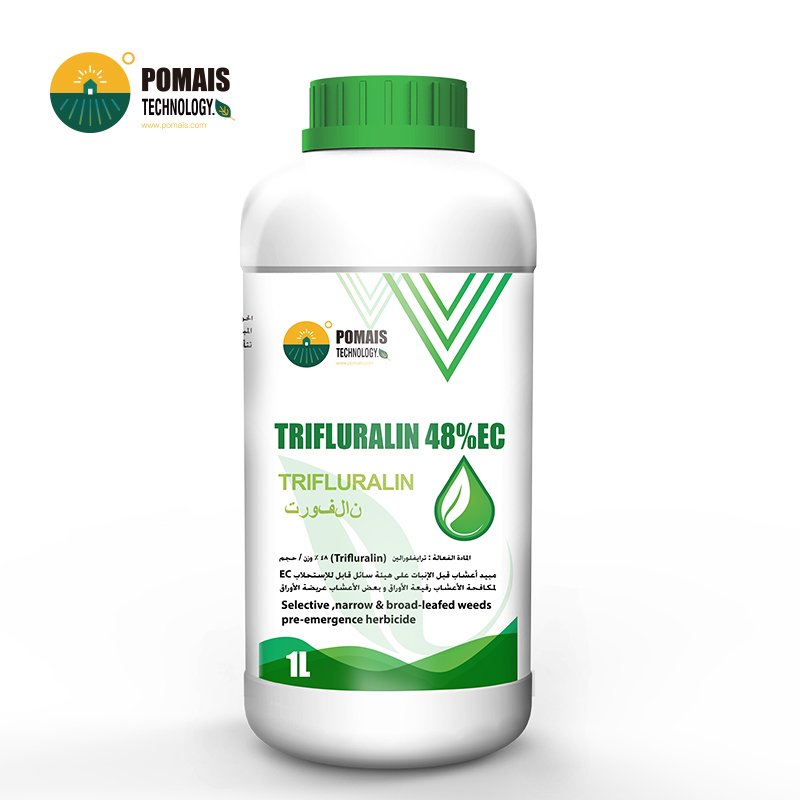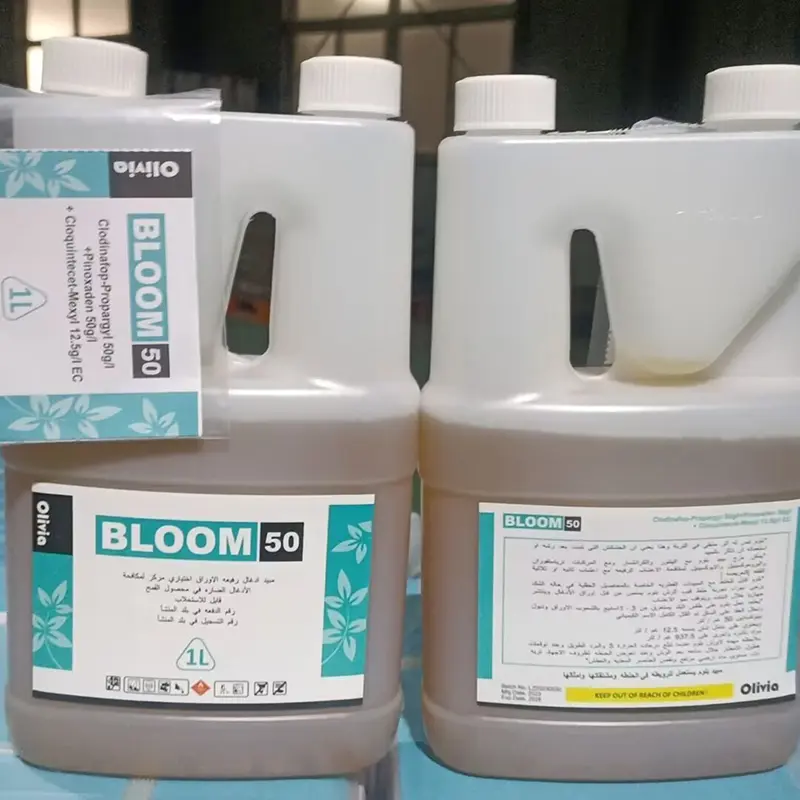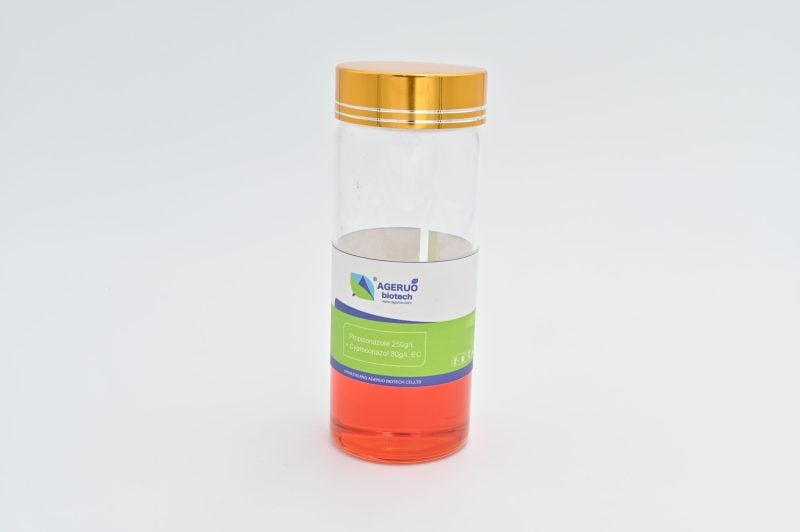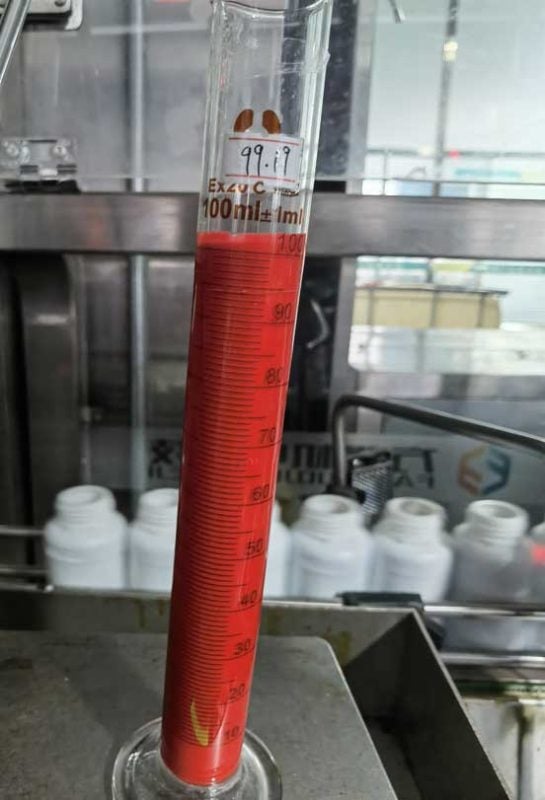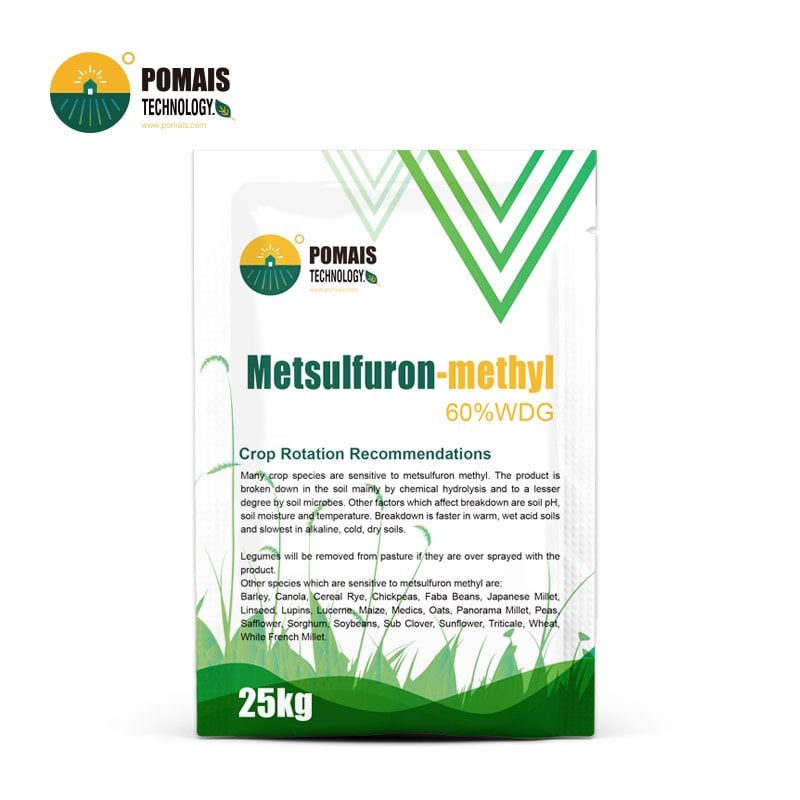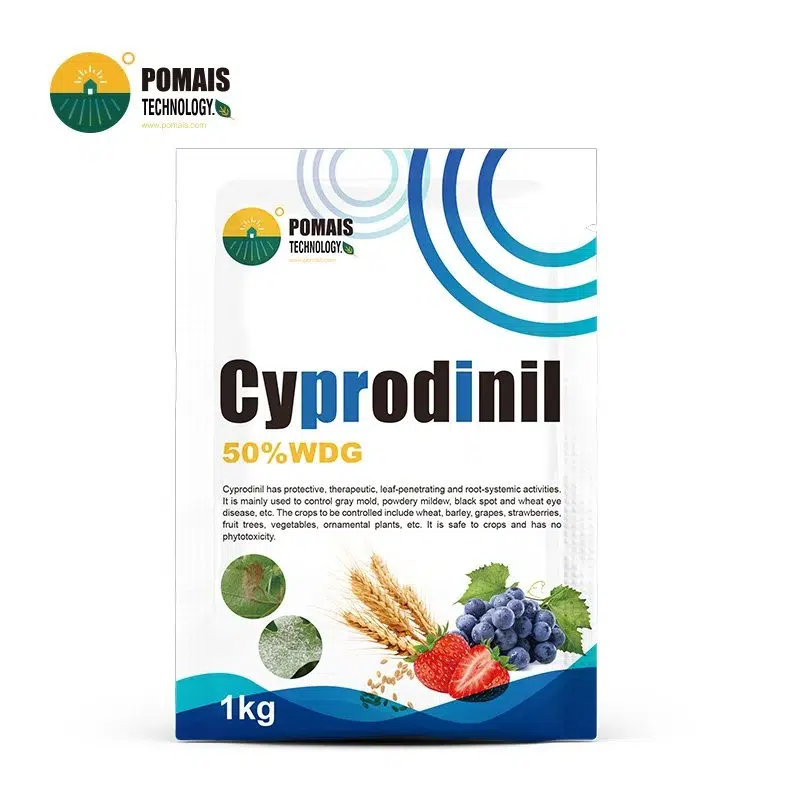Trifluralin Pre-emergent Herbicide
Trifluralin is a pre-emergent, selective herbicide used to control a wide variety of annual grasses and broadleaf weeds in agricultural and non-agricultural areas. It is commonly applied before weeds germinate, making it ideal for weed control in row crops, vegetables, fruit orchards, and ornamentals. Trifluralin works by inhibiting root development, preventing seedling establishment and reducing competition for nutrients, water, and light.
- Designed for Professional Buyers & Bulk Orders
- This product is available for business purchase and large-scale distribution.
- We support custom packaging, labeling, and formulation to meet your market needs.
- Let’s build your brand together.

About Trifluralin Pre-emergent Herbicide
About Trifluralin Pre-emergent Herbicide
| Product Name | Trifluralin Herbicide |
| Active Ingredient | Trifluralin |
| CAS Number | 1582-09-8 |
| Molecular Formula | C13H16F3N3O4 |
| Target Pests/Weeds | Annual grasses and broadleaf weeds such as barnyardgrass, foxtail, and pigweed |
| Applicable Crops | Soybean, cotton, vegetables, ornamental plants |
| Dosage | 1-2 liters per hectare |
| Mode of Action | Pre-emergent, soil-applied herbicide; inhibits root development in germinating weed seeds |
| Tank Mix Compatibility | Can be mixed with other herbicides for enhanced pre-emergent weed control |
| Common Formulations | Emulsifiable Concentrate (EC) |
| Common Concentrations | 4%EC, 480g/L EC |
| Packaging Types | 1L/bottle, 5L/bottle, 20L/container |
| Pre-Harvest Interval | 60 days (depending on crop) |
As a leading provider of herbicide products, we offer customized packaging and label design services for Trifluralin. Our herbicide formulations are developed under ISO 9001 standards, ensuring consistent quality and performance.
Trifluralin herbicide
POMAIS Trifluralin herbicide is a highly effective pre-emergent solution for weed control. Ideal for use in agricultural fields, it inhibits weed growth by preventing seedling development. Applied to soil and thoroughly incorporated, Trifluralin ensures long-lasting protection against broadleaf and grassy weeds. Available for sale with competitive pricing, this herbicide is trusted for effective weed management. Follow safety precautions for optimal results.
Mode of Action
Trifluralin belongs to the dinitroaniline class of herbicides and works by inhibiting cell division in germinating weed seeds. It is absorbed through the roots and affects the meristematic tissues, which are responsible for root and shoot growth. This results in stunted growth or prevents seedlings from emerging entirely. Trifluralin must be incorporated into the soil, either through tillage or irrigation, to be effective.
Applications
| Crops | Target Weeds | Application Method |
|---|---|---|
| Soybeans | Annual grasses, pigweed, lambsquarters | Pre-emergence soil incorporation |
| Cotton | Goosegrass, crabgrass, broadleaf weeds | Pre-emergence soil incorporation |
| Vegetables | Weeds such as chickweed, foxtail, barnyardgrass | Pre-emergence application |
| Ornamentals | Broadleaf weeds, grasses | Soil incorporation |
| Fruit Orchards | Annual grasses, pigweed, lambsquarters | Directed spray, soil incorporation |
Key Features & Benefits
- Mode of Action: Trifluralin is a dinitroaniline herbicide that disrupts cell division in the root tips of germinating weeds.
- Pre-Emergence Control: Applied to soil before weed seeds germinate.
- Broad-Spectrum Activity: Controls barnyardgrass, foxtail, pigweed, chickweed, crabgrass, and lambsquarters.
- Flexible Use: Applicable in soybeans, cotton, vegetables, fruit orchards, and ornamental crops.
- Extended Residual Control: Active for 4–6 months under ideal conditions.
- Low Solubility: Reduces leaching and improves soil stability.
Related reading:
Pendimethalin vs trifluralin herbicides
Combination Products
- Trifluralin + Glyphosate: Combines pre-emergent and post-emergent activity to target a broader spectrum of weeds.
- Trifluralin + Metolachlor: Effective combination for controlling annual grasses and broadleaf weeds in row crops like soybeans and cotton.
Application Rates
- Soybeans and Cotton: Apply 1.0 to 1.5 liters per hectare pre-emergence, with soil incorporation for best results.
- Vegetables: Use 0.8 to 1.2 liters per hectare pre-emergence, depending on the specific crop and soil type.
- Fruit Orchards: Apply 1.5 to 2.5 liters per hectare pre-emergence, incorporating into the soil for weed control.
Packaging Types
- Emulsifiable Concentrates (EC): Available in 1L, 5L, and 20L containers for pre-emergence soil incorporation.
- Granules: Packaged in 5kg, 10kg, and larger bags, ideal for soil incorporation in field crops and ornamentals.
| CROP | RATE | CRITICAL COMMENTS | |
| Up to 4% organic matter (sandy or light soils)* | 5-8% organic matter (clay, silt or loam soils)* | ||
| DRILLED CROPS Carrots, parsnips, celery, choumoellier, kale, rape, swedes, turnips, sunflower, haricot beans, lima beans, soybeans | 1.7 L/ha | 2.5 L/ha | Apply immediately before or up to 6 weeks prior to sowing. |
| Barley | 1.25–1.7 L/ha | 1.7 L/ha | Apply 14 days prior to sowing unless conditions are favourable for germination when planting may immediately follow incorporation. Drill seed below the treated soil layer (at least 5 cm deep). Do not seed too deeply in loose soils. |
Application and Incorporation
The soil should be flat, free of trash and large clods and not excessively wet. Foreign material such as plant residues or stones on or in the soil can reduce herbicide effectiveness.
Trifluralin herbicide should be evenly applied to the soil surface in a spray volume of 100-400 l of water/ha, at pressures of 200-300kpa. Avoid boom overlaps to minimise the risk of crop injury. Thorough incorporation is essential for weed control.
Mixing
Partially fill the spray tank and add the correct amount of Trifluralin herbicide. Agitate thoroughly while filling and spraying.
Danger
Harmful if swallowed. Causes mild skin irritation. Causes eye irritation. May cause an allergic skin reaction. Causes damage to organs through prolonged exposure. Very toxic to aquatic life with long lasting effects.
Handling Precautions
Keep out of reach of children. Do not eat, drink or smoke while using. Wash exposed skin thoroughly after handling. Do not breathe spray mist or vapours. Wear protective clothing.
Why Choose POMAIS Agriculture?
- ISO-Certified Quality
- Customization
- Global Support
- Expert Assistance
Get in Touch
For bulk pricing or product samples, contact POMAIS Agriculture today.
Trifluralin FAQ
- What is trifluralin?
Trifluralin is a pre-emergent herbicide used to control annual grasses and broadleaf weeds in various crops and non-crop areas. - Trifluralin mode of action:
Trifluralin inhibits cell division in the roots of germinating weeds, preventing them from growing and establishing. - How does trifluralin work?
Trifluralin creates a chemical barrier in the soil that stops weed seeds from sprouting by disrupting their root development. - Is trifluralin safe?
Trifluralin is considered safe for use when handled and applied according to label directions. However, it should be kept out of reach of children and pets to prevent accidental ingestion or contact. - Is trifluralin safe for pets?
Trifluralin can be harmful to pets if they are exposed to it directly after application. It is important to follow guidelines and allow treated areas to dry before allowing pets to access them. - What is trifluralin used for?
Trifluralin is primarily used to control weeds in crops like cotton, soybeans, vegetables, and ornamentals. It is also used in non-crop areas like gardens and along roadways. - Can trifluralin be used on turf grasses?
Yes, trifluralin can be used to prevent weed growth in turf grasses, particularly for controlling annual weeds before they emerge. - Does trifluralin kill grass?
Trifluralin does not kill established grass but is designed to prevent the growth of grass weeds from seeds. It is safe for use on existing lawns when applied correctly. - How long does trifluralin last?
Trifluralin can remain effective in the soil for 4-6 months, depending on environmental conditions and soil type.
| Product Name | Trifluralin Herbicide |
| Active Ingredient | Trifluralin |
| CAS Number | 1582-09-8 |
| Molecular Formula | C13H16F3N3O4 |
| Target Pests/Weeds | Annual grasses and broadleaf weeds such as barnyardgrass, foxtail, and pigweed |
| Applicable Crops | Soybean, cotton, vegetables, ornamental plants |
| Dosage | 1-2 liters per hectare |
| Mode of Action | Pre-emergent, soil-applied herbicide; inhibits root development in germinating weed seeds |
| Tank Mix Compatibility | Can be mixed with other herbicides for enhanced pre-emergent weed control |
| Common Formulations | Emulsifiable Concentrate (EC) |
| Common Concentrations | 4%EC, 480g/L EC |
| Packaging Types | 1L/bottle, 5L/bottle, 20L/container |
| Pre-Harvest Interval | 60 days (depending on crop) |
As a leading provider of herbicide products, we offer customized packaging and label design services for Trifluralin. Our herbicide formulations are developed under ISO 9001 standards, ensuring consistent quality and performance.
Trifluralin herbicide
POMAIS Trifluralin herbicide is a highly effective pre-emergent solution for weed control. Ideal for use in agricultural fields, it inhibits weed growth by preventing seedling development. Applied to soil and thoroughly incorporated, Trifluralin ensures long-lasting protection against broadleaf and grassy weeds. Available for sale with competitive pricing, this herbicide is trusted for effective weed management. Follow safety precautions for optimal results.
Mode of Action
Trifluralin belongs to the dinitroaniline class of herbicides and works by inhibiting cell division in germinating weed seeds. It is absorbed through the roots and affects the meristematic tissues, which are responsible for root and shoot growth. This results in stunted growth or prevents seedlings from emerging entirely. Trifluralin must be incorporated into the soil, either through tillage or irrigation, to be effective.
Applications
| Crops | Target Weeds | Application Method |
|---|---|---|
| Soybeans | Annual grasses, pigweed, lambsquarters | Pre-emergence soil incorporation |
| Cotton | Goosegrass, crabgrass, broadleaf weeds | Pre-emergence soil incorporation |
| Vegetables | Weeds such as chickweed, foxtail, barnyardgrass | Pre-emergence application |
| Ornamentals | Broadleaf weeds, grasses | Soil incorporation |
| Fruit Orchards | Annual grasses, pigweed, lambsquarters | Directed spray, soil incorporation |
Key Features & Benefits
- Mode of Action: Trifluralin is a dinitroaniline herbicide that disrupts cell division in the root tips of germinating weeds.
- Pre-Emergence Control: Applied to soil before weed seeds germinate.
- Broad-Spectrum Activity: Controls barnyardgrass, foxtail, pigweed, chickweed, crabgrass, and lambsquarters.
- Flexible Use: Applicable in soybeans, cotton, vegetables, fruit orchards, and ornamental crops.
- Extended Residual Control: Active for 4–6 months under ideal conditions.
- Low Solubility: Reduces leaching and improves soil stability.
Related reading:
Pendimethalin vs trifluralin herbicides
Combination Products
- Trifluralin + Glyphosate: Combines pre-emergent and post-emergent activity to target a broader spectrum of weeds.
- Trifluralin + Metolachlor: Effective combination for controlling annual grasses and broadleaf weeds in row crops like soybeans and cotton.
Application Rates
- Soybeans and Cotton: Apply 1.0 to 1.5 liters per hectare pre-emergence, with soil incorporation for best results.
- Vegetables: Use 0.8 to 1.2 liters per hectare pre-emergence, depending on the specific crop and soil type.
- Fruit Orchards: Apply 1.5 to 2.5 liters per hectare pre-emergence, incorporating into the soil for weed control.
Packaging Types
- Emulsifiable Concentrates (EC): Available in 1L, 5L, and 20L containers for pre-emergence soil incorporation.
- Granules: Packaged in 5kg, 10kg, and larger bags, ideal for soil incorporation in field crops and ornamentals.
| CROP | RATE | CRITICAL COMMENTS | |
| Up to 4% organic matter (sandy or light soils)* | 5-8% organic matter (clay, silt or loam soils)* | ||
| DRILLED CROPS Carrots, parsnips, celery, choumoellier, kale, rape, swedes, turnips, sunflower, haricot beans, lima beans, soybeans | 1.7 L/ha | 2.5 L/ha | Apply immediately before or up to 6 weeks prior to sowing. |
| Barley | 1.25–1.7 L/ha | 1.7 L/ha | Apply 14 days prior to sowing unless conditions are favourable for germination when planting may immediately follow incorporation. Drill seed below the treated soil layer (at least 5 cm deep). Do not seed too deeply in loose soils. |
Application and Incorporation
The soil should be flat, free of trash and large clods and not excessively wet. Foreign material such as plant residues or stones on or in the soil can reduce herbicide effectiveness.
Trifluralin herbicide should be evenly applied to the soil surface in a spray volume of 100-400 l of water/ha, at pressures of 200-300kpa. Avoid boom overlaps to minimise the risk of crop injury. Thorough incorporation is essential for weed control.
Mixing
Partially fill the spray tank and add the correct amount of Trifluralin herbicide. Agitate thoroughly while filling and spraying.
Danger
Harmful if swallowed. Causes mild skin irritation. Causes eye irritation. May cause an allergic skin reaction. Causes damage to organs through prolonged exposure. Very toxic to aquatic life with long lasting effects.
Handling Precautions
Keep out of reach of children. Do not eat, drink or smoke while using. Wash exposed skin thoroughly after handling. Do not breathe spray mist or vapours. Wear protective clothing.
Why Choose POMAIS Agriculture?
- ISO-Certified Quality
- Customization
- Global Support
- Expert Assistance
Get in Touch
For bulk pricing or product samples, contact POMAIS Agriculture today.
Trifluralin FAQ
- What is trifluralin?
Trifluralin is a pre-emergent herbicide used to control annual grasses and broadleaf weeds in various crops and non-crop areas. - Trifluralin mode of action:
Trifluralin inhibits cell division in the roots of germinating weeds, preventing them from growing and establishing. - How does trifluralin work?
Trifluralin creates a chemical barrier in the soil that stops weed seeds from sprouting by disrupting their root development. - Is trifluralin safe?
Trifluralin is considered safe for use when handled and applied according to label directions. However, it should be kept out of reach of children and pets to prevent accidental ingestion or contact. - Is trifluralin safe for pets?
Trifluralin can be harmful to pets if they are exposed to it directly after application. It is important to follow guidelines and allow treated areas to dry before allowing pets to access them. - What is trifluralin used for?
Trifluralin is primarily used to control weeds in crops like cotton, soybeans, vegetables, and ornamentals. It is also used in non-crop areas like gardens and along roadways. - Can trifluralin be used on turf grasses?
Yes, trifluralin can be used to prevent weed growth in turf grasses, particularly for controlling annual weeds before they emerge. - Does trifluralin kill grass?
Trifluralin does not kill established grass but is designed to prevent the growth of grass weeds from seeds. It is safe for use on existing lawns when applied correctly. - How long does trifluralin last?
Trifluralin can remain effective in the soil for 4-6 months, depending on environmental conditions and soil type.
Related Products
Latest News

